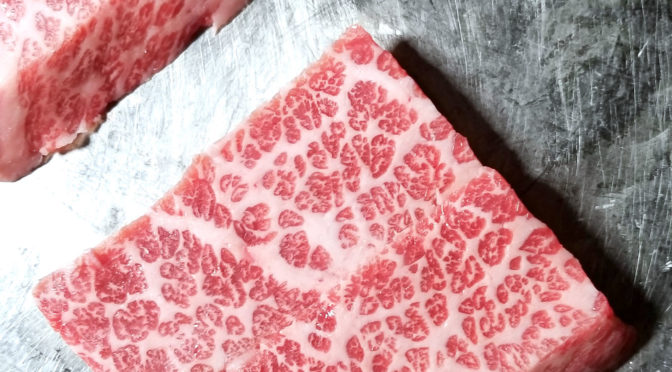After having a discussion with some food pals about beef marbling scores for Japanese beef, I realized that there’s a lot of confusion surrounding the subject. As such, I figured it was time for a more detailed article about this shit. Here goes…
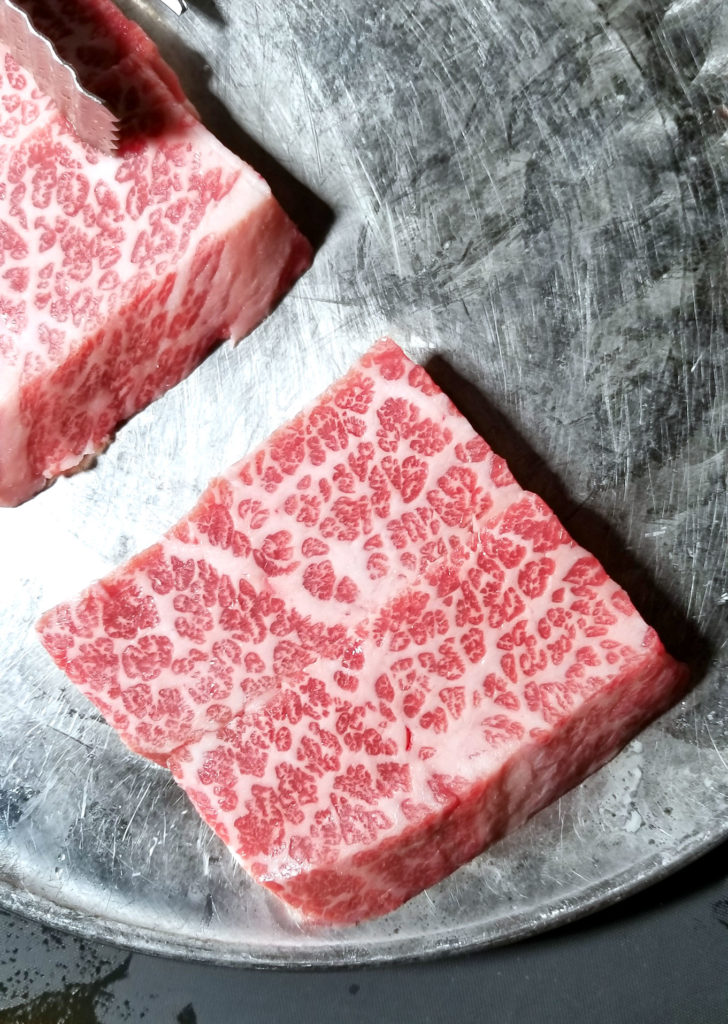
There are three things to understand when it comes to marbling scores:
(1) Yield Rating
(2) Quality Rating
(3) Beef Marbling Standard (BMS)
In many ways quality and marbling overlap each other, since it usually follows that highly marbled beef is also high quality beef. But lets break it down here one at a time.
(1) The A-B-C’s of Yield
I like to think of this as the quantity component, as opposed to quality. A yield rating is a percentage figure that objectively describes the cutability of an animal, or the amount of the animal that can be harvested from a particular area of the carcass.
In particular, this score is determined by carefully measuring shit once a cut is made between the 6th and 7th rib, on the rib eye. The score is assigned after plugging four measurements taken at that cut into a “multiple regression equation.”
The four measurements are: rib eye area; rib thickness; cold left side weight; and subcutaneous fat thickness.
Raters score wagyu as either A, B or C in Japan. A has the highest yield, at 72% or more. B is 69-71%, and this is the most common yield. C is under 69%.
From a business and sales standpoint, it’s better to have higher yields on your animal. So A is better than C in many ways on that angle. For example, a carcass can get knocked down from A to B if the band of outer fat (not the marbling) is too thick, because it lowers the cutability yield (makes the actual rib eye meat smaller). Farmers and ranchers who raise the animals will want to select and breed for good yield traits.
From a consumer’s or diner’s standpoint, however, the yield isn’t, or shouldn’t really be, much of a concern. While a rating of A, B or C makes us instinctively think A is better than C, that would kinda be wrong in this case.
The C grade really just means that, before the meat got to our plate, more of the extrenal fat had to be trimmed away, the rib eye was small, or there was less of that particular cut of meat to harvest from the animal. Or something like that…
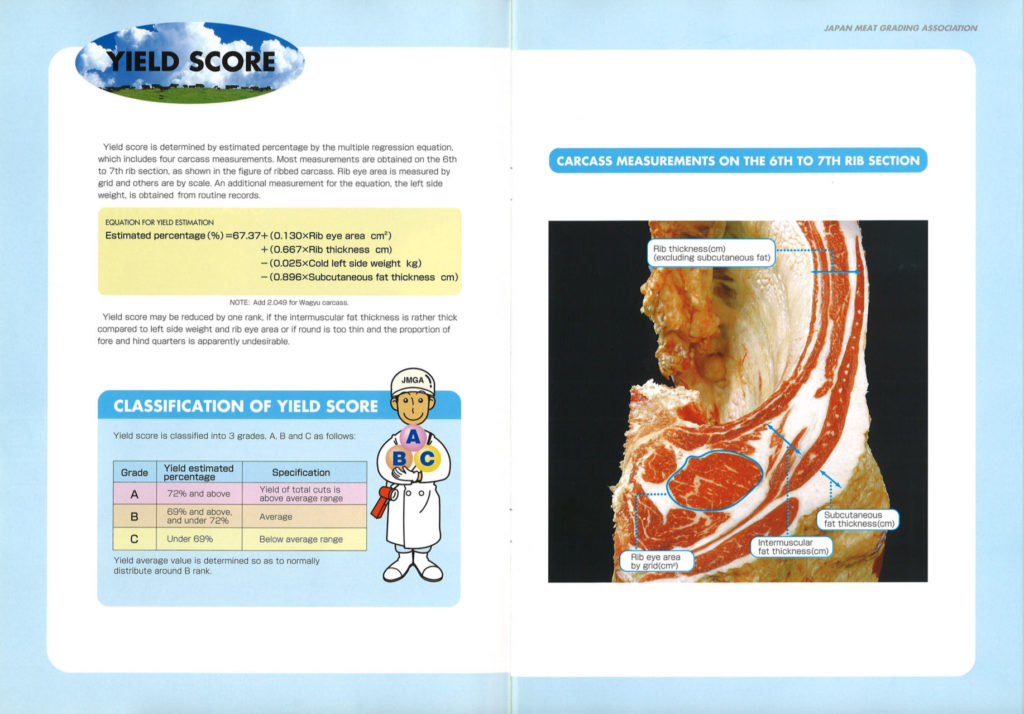
(2) Quality
Quality grades describe the meat’s marbling, color, brightness, firmness and texture. It also describes fat quality, color and luster. This score is assigned as a value of 1 to 5, with 1 being the lowest quality and 5 being the highest. A lot of detailed analysis goes into this score.
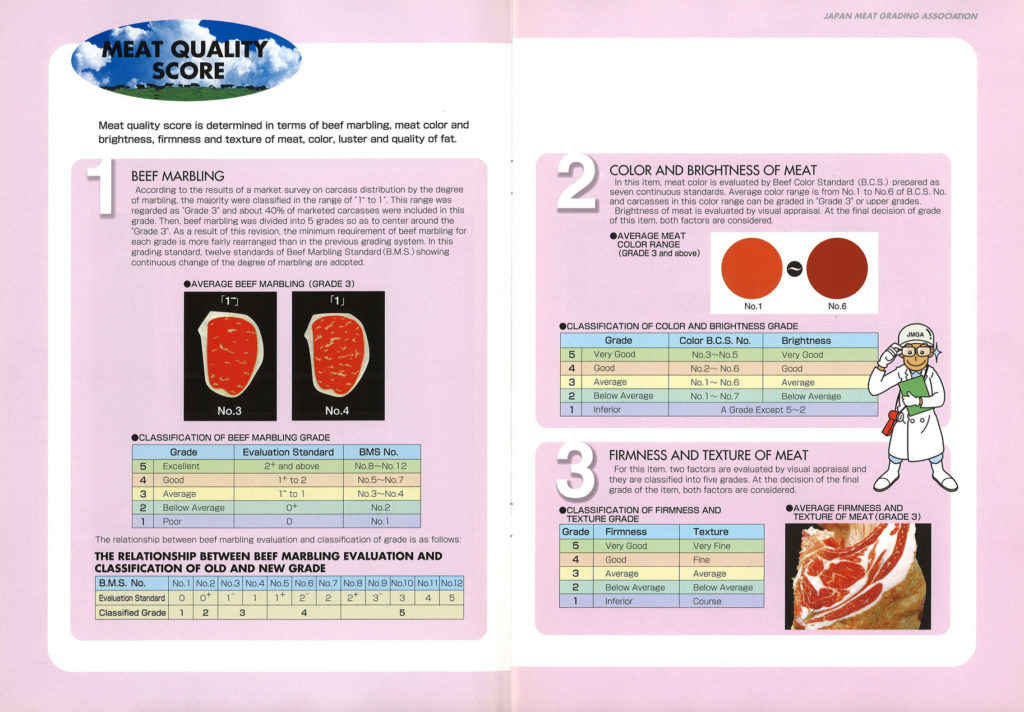
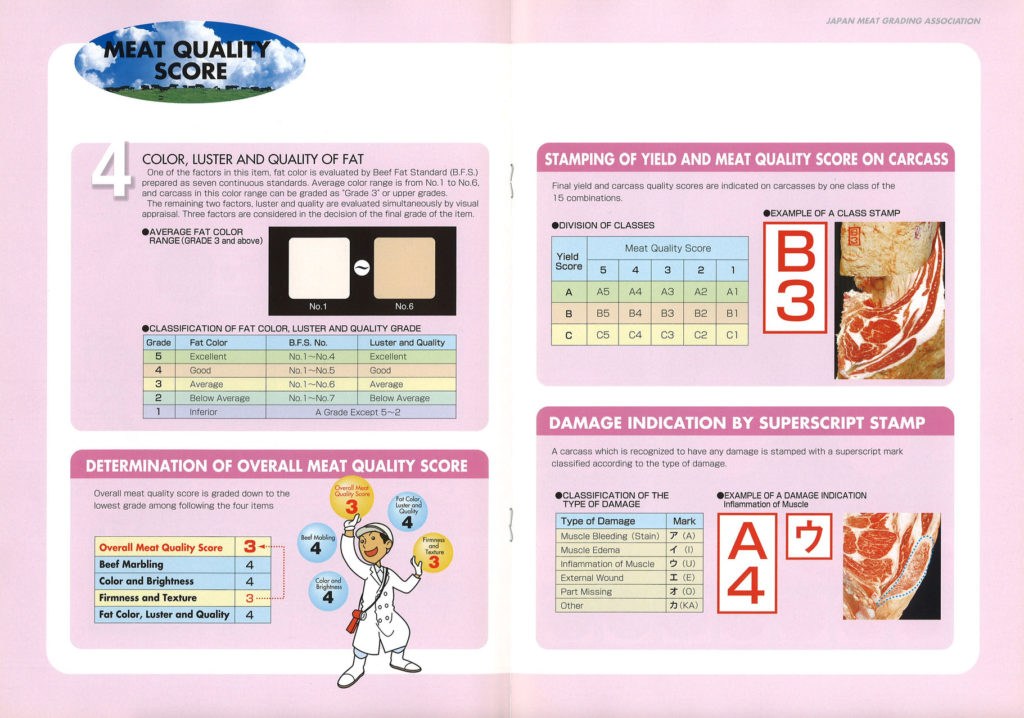
As you can see, marbling, meat color and brightness, meat firmness and texture, and fat quality, color and luster are all evaluated on separate scales before being plugged into the overall quality score of 1-5. Pretty intense.
Some of the measurements are now starting to be done with cameras and digital image analysis software (like in the US), to more objectively determine the quality scores.
(3) Beef Marbling Standard (BMS)
The beef marbling stardard assigns a score to the meat based on how much intramuscular fat (IMF, or marbling) it has. It is scored from 1-12, with 1 being the least marbling and 12 being the most. Here is what that looks like:
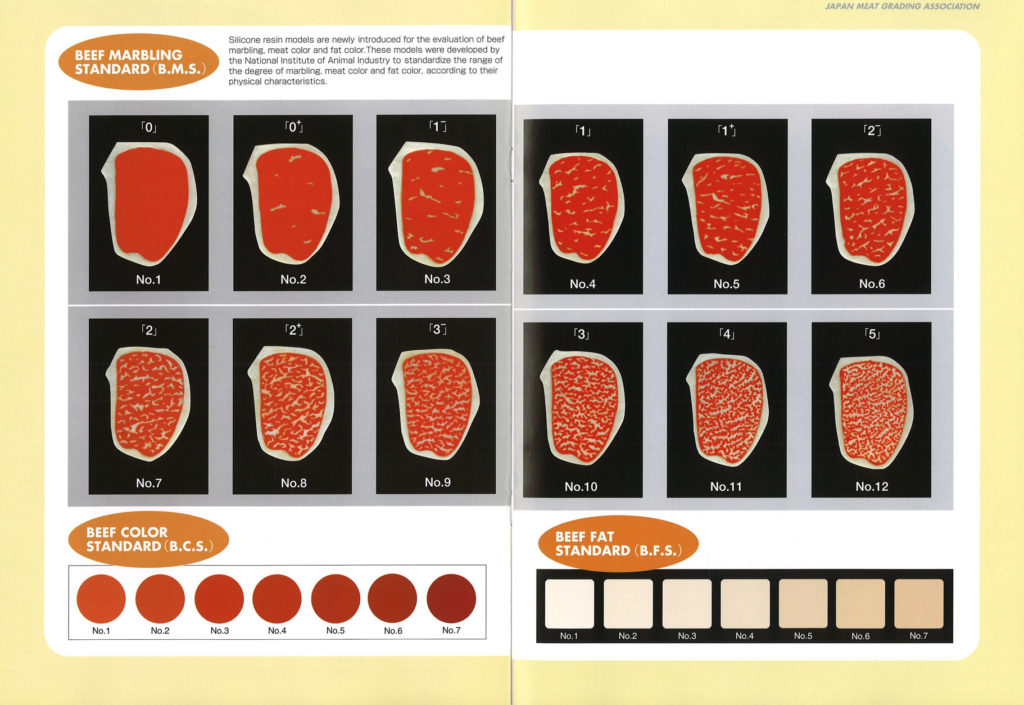
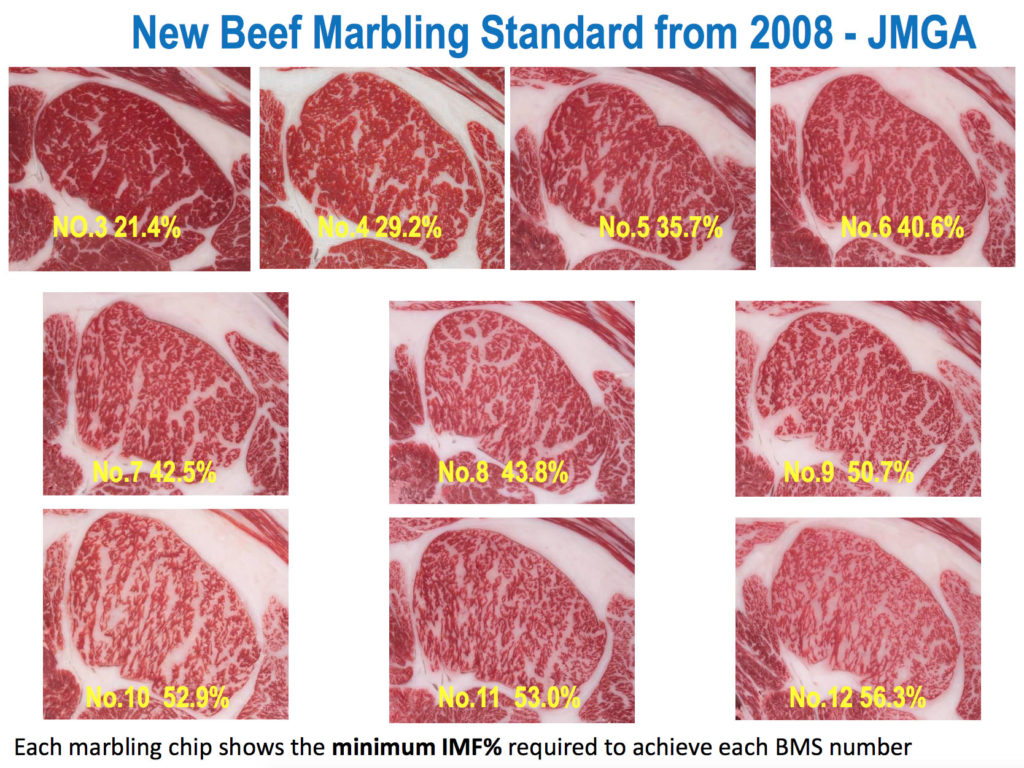
There is definitely some interplay and overlap here with the quality score, as marbling is a factor one must consider when assigning a quality score of 1-5 up above. But the BMS score is much a more specific look at the intramuscular fat. Here is the relationship between quality and BMS:
Quality 1 = BMS 1 (poor)
Quality 2 = BMS 2 (below avg)
Quality 3 = BMS 3-4 (avg)
Quality 4 = BMS 5-7 (good)
Quality 5 = BMS 8-12 (excellent)
As you can see, a score of 5 covers a wide range when it comes to the BMS scale. BMS 8 is very different from BMS 12, yet they are both a 5 for quality.
You may be thinking, why the redundancy? Well, as I mentioned in the previous section, the quality also takes meat color, fat color, texture and other variables into account. BMS, again, is purely about the marbling.
But when I see “A5” on a menu, I want to know the BMS as well. I sell BMS 9 domestic wagyu strip for $75 a pound, whereas I sell BMS 12 Kobe for $200 a pound. Both would be considered a quality of 5. See how the BMS score just within the quality rating of 5 can drastically alter the price? Crazy.
Putting It All Together
Basically the best quality available is A5 BMS 12. The A means that there was very little junk on the animal, and it had a good-sized rib eye. The 5 means it’s the best when assessing all the variables relevant to quality, like color, texture and fat. And the 12 means that it has the most marbling.
But I wouldn’t shy away from B5 or C5 BMS 12 either. Remember the letter grade is more about quantity, at least it seems so to me, anyway. Actually, my sweet spot seems to be around BMS 8 or 9. Anything more than that is like foie gras. It tastes like a completely different protein.

